Here's how Wikipedia defines it:
"In economics, hyperinflation is inflation that is very high or "out of control". While the real values of the specific economic items generally stay the same in terms of relatively stable foreign currencies, in hyperinflationary conditions the general price level within a specific economy increases rapidly as the functional or internal currency, as opposed to a foreign currency, loses its real value very quickly, normally at an accelerating rate.[1] Definitions used vary from one provided by the International Accounting Standards Board, which describes it as "a cumulative inflation rate over three years approaching 100% (26% per annum compounded for three years in a row)", to Cagan's (1956) "inflation exceeding 50% a month." [2] As a rule of thumb, normal monthly and annual low inflation and deflation are reported per month, while under hyperinflation the general price level could rise by 5 or 10% or even much more every day.So, what seems important to take from this definition is that hyperinflation is a very high rate of inflation that comes about when a country's paper currency loses its previously perceived 'real value' or 'purchasing power' within and outside of its borders. This can happen when a country has experienced recent blows to its economy, such as will be discussed further. Or when the country is mired in war and other non-productive activity. Another contributing factor to hyperinflation is when there is an "unchecked increase in the money supply". By this definition alone, some believe that a certain empire in the northern hemisphere is well on its way to reaching such a level of economic chaos. But more on that later too.
A vicious circle is created in which more and more inflation is created with each iteration of the ever increasing money printing cycle. Hyperinflation becomes visible when there is an unchecked increase in the money supply (see hyperinflation in Zimbabwe) usually accompanied by a widespread unwillingness on the part of the local population to hold the hyperinflationary money for more than the time needed to trade it for something non-monetary to avoid further loss of real value. Hyperinflation is often associated with wars (or their aftermath), currency meltdowns, political or social upheavals, or aggressive bidding on currency exchanges."
Most everyone who's heard of hyperinflation is by now familiar with what happened in the Weimar Republic in 1920s Germany. George J.W. Goodman's (who went by the nom de plume 'Adam Smith') Essay on the German Hyperinflation 1923 is one of the best known accounts of this infamous calamity:
"... you can trace the steps to hyperinflation, but some of the reasons remain cloudy. Germany abandoned the gold backing of its currency in 1914. The war was expected to be short, so it was financed by government borrowing, not by savings and taxation. In Germany prices doubled between 1914 and 1919.Ok, but that was 1923, and in another country almost a century ago under what looks like a highly unusual set of circumstances. So one could argue that the occurrence of hyperinflation is something of a rarity and therefore not very likely to happen too often, right?
After four disastrous years Germany had lost the war. Under the Treaty of Versailles it was forced to make a reparations payment in gold-backed Marks, and it was due to lose part of the production of the Ruhr and of the province of Upper Silesia. The Weimar Republic was politically fragile.
But the bourgeois habits were very strong. Ordinary citizens worked at their jobs, sent their children to school and worried about their grades, maneuvered for promotions and rejoiced when they got them, and generally expected things to get better. But the prices that had doubled from 1914 to 1919 doubled again during just five months in 1922. Milk went from 7 Marks per liter to 16; beer from 5.6 to 18. There were complaints about the high cost of living. Professors and civil servants complained of getting squeezed. Factory workers pressed for wage increases. An underground economy developed, aided by a desire to beat the tax collector.
On June 24, 1922, right-wing fanatics assassinated Walter Rathenau, the moderate, able foreign minister. Rathenau was a charismatic figure, and the idea that a popular, wealthy, and glamorous government minister could be shot in a law-abiding society shattered the faith of the Germans, who wanted to believe that things were going to be all right. Rathenau's state funeral was a national trauma. The nervous citizens of the Ruhr were already getting their money out of the currency and into real goods -- diamonds, works of art, safe real estate. Now ordinary Germans began to get out of Marks and into real goods.
Pianos, wrote the British historian Adam Fergusson, were bought even by unmusical families. Sellers held back because the Mark was worth less every day. As prices went up, the amounts of currency demanded were greater, and the German Central Bank responded to the demands. Yet the ruling authorities did not see anything wrong. A leading financial newspaper said that the amounts of money in circulation were not excessively high. Dr. Rudolf Havenstein, the president of the Reichsbank (equivalent to the Federal Reserve) told an economics professor that he needed a new suit but wasn't going to buy one until prices came down.
Why did the German government not act to halt the inflation? It was a shaky, fragile government, especially after the assassination. The vengeful French sent their army into the Ruhr to enforce their demands for reparations, and the Germans were powerless to resist. More than inflation, the Germans feared unemployment. In 1919 Communists had tried to take over, and severe unemployment might give the Communists another chance. The great German industrial combines -- Krupp, Thyssen, Farben, Stinnes -- condoned the inflation and survived it well. A cheaper Mark, they reasoned, would make German goods cheap and easy to export, and they needed the export earnings to buy raw materials abroad. Inflation kept everyone working.
So the printing presses ran, and once they began to run, they were hard to stop. The price increases began to be dizzying. Menus in cafes could not be revised quickly enough. A student at Freiburg University ordered a cup of coffee at a cafe. The price on the menu was 5,000 Marks. He had two cups. When the bill came, it was for 14,000 Marks. "If you want to save money," he was told, "and you want two cups of coffee, you should order them both at the same time."
The presses of the Reichsbank could not keep up though they ran through the night. Individual cities and states began to issue their own money. Dr. Havenstein, the president of the Reichsbank, did not get his new suit. A factory worker described payday, which was every day at 11:00 a.m.: "At 11:00 in the morning a siren sounded, and everybody gathered in the factory forecourt, where a five-ton lorry was drawn up loaded brimful with paper money. The chief cashier and his assistants climbed up on top. They read out names and just threw out bundles of notes. As soon as you had caught one you made a dash for the nearest shop and bought just anything that was going." Teachers, paid at 10:00 a.m., brought their money to the playground, where relatives took the bundles and hurried off with them. Banks closed at 11:00 a.m.; the harried clerks went on strike.
The flight from currency that had begun with the buying of diamonds, gold, country houses, and antiques now extended to minor and almost useless items -- bric-a-brac, soap, hairpins. The law-abiding country crumbled into petty thievery. Copper pipes and brass armatures weren't safe. Gasoline was siphoned from cars. People bought things they didn't need and used them to barter -- a pair of shoes for a shirt, some crockery for coffee. Berlin had a "witches' Sabbath" atmosphere. Prostitutes of both sexes roamed the streets. Cocaine was the fashionable drug. In the cabarets the newly rich and their foreign friends could dance and spend money. Other reports noted that not all the young people had a bad time. Their parents had taught them to work and save, and that was clearly wrong, so they could spend money, enjoy themselves, and flout the old.
The publisher Leopold Ullstein wrote: "People just didn't understand what was happening. All the economic theory they had been taught didn't provide for the phenomenon. There was a feeling of utter dependence on anonymous powers -- almost as a primitive people believed in magic -- that somebody must be in the know, and that this small group of 'somebodies' must be a conspiracy."
When the 1,000-billion Mark note came out, few bothered to collect the change when they spent it. By November 1923, with one dollar equal to one trillion Marks, the breakdown was complete. The currency had lost meaning."
Below is a list of most of the countries and times in which hyperinflation has occurred in the past 90 years. Keep in mind that although the peoples of these countries experienced it in varying degrees of severity, and that it developed over different spans of time, it always made life exceedingly difficult for the average person. Also keep in mind that in some countries it was felt incrementally - making the train wreck feel more like a slow motion nightmare than a ferocious pouncing monster.
And then there's Zimbabwe, where the second highest rate of inflation in recent history occurred in August of 2008. Zimbabwe saw the value of it's Zim dollar plummet and reach an estimated hyperinflationary high of 11,200,000%! Seems fantastical, eh? One of the main reasons given for it happening was gross mismanagement on the part of President Robert Mugabe. Mugabe took land away from commercial farmers who had been growing food there successfully for decades and basically handed it over to his political cronies. This naturally led to massive dysfunction in crop production and Zimbabwe's citizens having to spend their money on food imported from neighboring countries. This was on top of years of political oppression, civil unrest, massive poverty, and a lack of fiscal discipline behind the decision to print more and more money. All of these factors caused a loss of confidence in Zimbabwe's ruling class and monetary system (whatever confidence existed up until then), causing a downward spiral in the value of their currency. And so, the more money was printed, the less valuable it became.Angola 1991 - 1995 Argentina 1975 - 1991 Austria 1914 - 1993 Belarus 1994 - 2002 Bolivia 1994 - 2002 Bosnia and Herzegovina 1992 - 1993 Brazil 1986 - 1994 Bulgaria 1996 - 1997 China 1948 - 1949 Georgia 1993 - 1994 Greece 1942 - 1944 Hungary 1922 - 1924 and again from 1945 - 1946 Israel 1971 - 1986 Krajina 1992 - 1993 Mexico 1982 - 1993 Nicaragua 1987 - 1990 Peru 1988 - 1990 Philippines 1942 - 1944 Poland 1921 - 1924 and again from 1989 - 1991 Romania 1990 - 2006 Russian Federation 1921 - 1922 and again from 1992 - 1998 Taiwan 1945 Ukraine 1993 - 1945 U.S. 1861 - 1865 and read further below Yugoslavia 1989 - 1994 Zaire 1989 - 1996
What ultimately helped Zimbabwe dig their way out was a decision to allow the people to use other currencies, including that perceived bastion of financial safety, the U.S. dollar, to pay for commodities.
At this point the inquiring reader may likely be asking, "How does all this point to the U.S. going into hyperinflation?"
Several generations ago, Austrian economist Ludwig von Mises (1881- 1973) said this:
"There is no means of avoiding the final collapse of a boom brought about by credit expansion. The alternative is only whether the crises should come sooner as the result of a voluntary abandonment of further credit expansion or later as a final and total catastrophe of the currency system involved."And yet credit expansion and 'printing money' is exactly what many observers of the U.S. economy say is driving the nails in the coffin of our monetary system, with possibly far-reaching effects around the globe. Ostensibly, QE2, or second Quantitative Easing was implemented by the Federal Reserve Bank last fall to make more money available to the banks. This is supposed to make it easier for the banks to lend money to the hard-hit public so that they can build up their businesses and help stimulate the economy. It hadn't worked the first time more money was made available (QE1), so the Fed decided to double down and try it again.
Part of this plan also includes buying up toxic assets, or bad debt, already accrued by the banks, thanks to the market bubbles which had been previously instigated by the Fed. As if this weren't enough, the Fed is also printing money in ever greater amounts in order to buy U.S. Treasury Bonds - not from the Treasury itself, but from Goldman Sachs. Goldman Sachs you may remember, is one of the major culprits of the derivatives and sub-prime mortgage lending meltdown of 2008. If they can't fleece the public one way, you can be sure that they will find another.
For a quick and entertaining explanation of QE2, watch this video called Quantitative Easing Explained:
And here is another good video explaining what QE2 really does (or doesn't do).
We've already established that one of the things which causes a country's economy to go into hyperinflation is a 'crises of confidence' in the currency. The reason why the Federal Reserve Bank is printing the money necessary to buy U.S. bonds is because China and other countries are no longer interested in buying more U.S. debt, which has soared into the trillions.
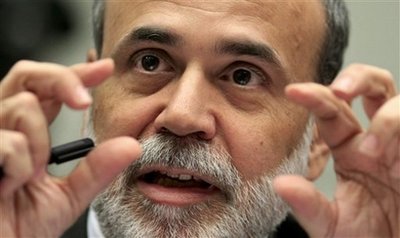
And sure enough, we are now hearing that China Has Divested 97 Percent of Its Holdings in U.S. Treasury Bills:
"China has dropped 97 percent of its holdings in U.S. Treasury bills, decreasing its ownership of the short-term U.S. government securities from a peak of $210.4 billion in May 2009 to $5.69 billion in March 2011, the most recent month reported by the U.S. Treasury.The writing on the wall is clearly spelled out:
Treasury bills are securities that mature in one year or less that are sold by the U.S. Treasury Department to fund the nation's debt.
Mainland Chinese holdings of U.S. Treasury bills are reported in column 9 of the Treasury report linked here.
Until October, the Chinese were generally making up for their decreasing holdings in Treasury bills by increasing their holdings of longer-term U.S. Treasury securities. Thus, until October, China's overall holdings of U.S. debt continued to increase.
Since October, however, China has also started to divest from longer-term U.S. Treasury securities. Thus, as reported by the Treasury Department, China's ownership of the U.S. national debt has decreased in each of the last five months on record, including November, December, January, February and March."
(Reuters) - The United Nations warned on Wednesday of a possible crisis of confidence in, and even a "collapse" of, the U.S. dollar if its value against other currencies continued to decline.It seems to me as though these "crises of confidence in the U.S. dollar" are being broadcast pretty loudly, considering that they are being published in U.N. reports, then publicized by Reuters news agency! It may well be that the perception of impending fiscal collapse itself helps to bring it about as much as the conditions themselves.
In a mid-year review of the world economy, the U.N. economic division said such a development, stemming from the falling value of foreign dollar holdings, would imperil the global financial system.
The report, an update of the U.N. "World Economic Situation and Prospects 2011" report first issued in December, noted that the dollar exchange rate against a basket of other key currencies had reached its lowest level since the 1970s.
This trend, it said, had recently been driven in part by interest rate differentials between the United States and other major economies and growing concern about the sustainability of the U.S. public debt, half of which is held by foreigners.
"As a result, further (expected) losses of the book value of the vast foreign reserve holdings could trigger a crisis of confidence in the reserve currency, which would put the entire global financial system at risk," it said.
The 17-page report referred at another point to the "still looming risk of a collapse of the United States dollar."
Rob Vos, a senior U.N. economist involved with the report, said if emerging markets "massively start selling off dollars, then you can have this risk of a slide in the dollar.
"We're not saying the collapse is imminent, but the factors are further building up that we could quickly come to that stage if other things are not improving quickly on other fronts -- like the risk of the U.S. not being able to service its obligations," he told Reuters."
We would do well to remember, however, that an article on this subject appearing in Reuters, although it covers something important which people badly need to hear, will not connect the dots for us and give us the bigger picture we are seeking, especially since it is privately owned and its editorial policy is so tightly controlled by those who are heavily vested in the system. For the bigger picture, we can look to more independent analysis from the likes of John Williams, who has interpreted the raw economic data for decades. He's the guy corporations go to for help in making sense of government statistics because he doesn't mince his words. On his website 'Shadow Government Statistics', Williams has posted his Hyperinflation Report 2011, where he goes into some depth about hyperinflation that is beyond the scope of this article.
Williams can also be heard in an interview here where he explains how the U.S. has been "kicking the can down the road" in terms of solving its problems for several years. He also makes the point that while hyperinflation is all but guaranteed, there are measures one can take to protect one's self and limit damage from the ensuing fallout.
Still think it won't or can't happen?
For another bird's eye view of the situation, watch this video by the NIA - the National Inflation Association. (Just try and keep your cookies down when you see Glenn Beck speaking!)
Although the NIA does a good job of putting the pieces together in some of their videos, they may not be all that they purport to be. It recently came to light that this organization, which has been warning people of the coming economic turmoil, has been recommending worthless penny stocks to its readers in classic 'pump-and-dump' style. Still, the information presented about the causes and effects of coming hyperinflation are valuable.
Even if one has a job, the money earned is likely to have very little purchasing power once things turn really sour. And that will be the most painful thing to deal with when one has to buy food. Imagine paying $40 or $50 for a pound of beef, or 12 ounces of bacon. Imagine spending more than that for a few pounds of rice, or whatever food staple you rely upon to keep you going. Imagine wanting to visit your mother or brother in another town or city and realizing that the gasoline needed to fuel your car for the trip will cost $150 or $200! These are not unreasonable things to expect to happen when hyperinflation hits.
Some suggest buying a reasonable amount of food which can be kept and stored for a while may be a good partial solution (and a good idea in any event, given all the cosmic and environmental changes unfolding lately).
Another more long-term solution, quite popular among many independent observers of the economy, is to purchase precious metals in the form of gold and silver coins and bars. This is suggested, not as an investment, but as a way to preserve the value of the money one already has.
Currencies have been based upon the market value of gold and silver, or have come directly in the form of gold and silver, for many centuries, and it seems things haven't changed very much in that regard!
Is this a safe thing to do? Some believe that it may be unsafe not to. From the Market Oracle website we get this:
"Once upon a time, Robert Kiyosaki, the author of Rich Dad, Poor Dad said this, "For 2011, silver is the single most attractive investment for any investor." Bob Chapman reported, "We are about 25-30% into the game. We have a long way to go." Peter Schiff predicted "200 an oz." Rick Rule, "Outlook very bullish." Gerald Celente said, "Higher and higher." Eric Sprott and David Morgan both agreed that north of $100 an ounce was likely. Richard Daughty, James Turk, and Max Keiser were the biggest bulls with forecasts that ranged from $200, up to $500 an ounce.The Market Oracle goes on to say that he'd heard so much about silver that the repetition of hearing about its value served as what we here on SOTT would call 'social proof' or informational social influence. That isn't to say that the Market Oracle is correct in believing the social proof he's been given - only that the proof itself is seen as valid by his estimation.
The majority of these statements all took place within the last year. Some very prominent investors are giving more faith to silver than some Christians are the Rapture (especially post-May 21st.) I initially had my doubts about the facts, figures and 'proof' in the charts. Silver cannot be predicted in-market. I needed something else, I needed a revelation (especially post-May 21st.)
But, one day, all doubt in my position vanquished. I was a new man, with the confidence of a cheetah in a race with a three-toed sloth. Fireworks went off in my brain, my ears perked up and my posture straightened. I began to connect the dots of exactly why and how silver is going to make all of us silver bugs very, very rich, and, quite possibly save humanity. This doesn't have to do with the JP Morgan manipulation, nor the seemingly endless practical applications of silver, not even that it is the worlds finest conductor of electricity. No relevance in that supplies are slowly shrinking.
Not even that silver has been used as 'money' for some 3,000 years all around the world, and could be easily accepted and used as an alternative when Ben Berbanke AKA The Printosaurus tanks the dollar (for example, Utah.) What is it, then?"
Interestingly, the 'buy silver' meme has indeed gone viral, in part due to TV commentator and blogger Max Keiser. But before we see how that has happened lets look at a story that we published not too long ago in our Connecting the Dots series:
Another accelerating trend through 2010 was the complete lack of any consequence for those who perpetrate financial swindles, frauds, lies or terror on an ever-increasing scale. For years, it has been common knowledge for those in the know that large entities like JP Morgan and Goldman Sachs illegally manipulate the precious metals markets for their own profit. In March 2010, whistleblower Andrew McGuire provided undeniable proof. Bill Murphy, Chairman of the Gold Anti-Trust Action Committee (GATA) made this proof public at the CFTC Public Hearing on Precious Metals, but the video feed conveniently died as Murphy was about to speak (and sprang back to life as soon as Murphy was done). GATA further reveals that the metals market is a Ponzi scheme because there is far less physical metal than that which is traded on paper - which should naturally increase their price but is artificially suppressed by the pressure of investment banks. The following day, on March 26, whistleblower McGuire and his wife were out shopping when a car came careening out of a side road and hit theirs. The driver attempted to escape by accelerating at an eyewitness who tried to block him and managed to jump away, and then hit two other cars, before being apprehended by the London Metropolitan Police. McGuire and his wife were hospitalized with minor injuries. There has been no word on the hit-and-run driver since. The mainstream media barely touched the above revelations and the CFTC failed, somewhat unsurprisingly, to take any action. After the hearing, Murphy was contacted by several major media outlets for interviews. However, within 24 hours, all his interviews were canceled."Outraged by the manipulations of the big investment banks, Max Keiser routinely implores people to buy physical silver (coins, bars, etc.) in order to help sink JPMorgan Chase, which owns, as stated above, far less physical metal than they actually trade on paper. The net result of trading in this way (called naked short selling) is to make loads of money from nothing other than the manipulation of people's perception about the value of silver. The mainstream media, functioning as it does to churn out massive quantities of fake social proof, then portrays the recent increase in the monetary of value of silver as a "bubble", which scares people out of making what those who provide genuine social proof explain is actually a good investment. And, as if to prove the point, JPMorgan Chase then further manipulates the silver market, lessening the metal's 'spot value'.
With people hearing about (and believing) in silver's ability to offset the pain of inflation, how long can this go on for without serious repercussions for the existing monetary system is anybody's guess. Will JPMorgan Chase be the recipient of yet another colossal bail-out when it does?
The 'silver bug', as some are calling it, has already reached some of your more average business owners, as the above image seems to indicate. Though I cannot say for sure where and when this picture was taken, it shows a gas station that is happy to take pre-1964 dimes, quarters, half dollar and dollar coins. Otherwise known as 'junk silver', pre-1964 coins were minted containing over 90% silver - unlike US coins issued since then, which contain no silver.
Like Wile E. Coyote lingering in the air just seconds before he realizes that he's already gone over the cliff, the U.S. economy sits over the brink, suspended in midair. In a few weeks the Federal government will have to decide whether it surpasses its mandatory debt ceiling and borrows more to keep propping up the economy. Neither choice is a good one. It will either raise the debt ceiling, adding much more to the already cancerous deficit, or the US will effectively default on its debt, which some believe will exacerbate the existing loss of confidence and create a systemic crash. The political lines of the argument have also been sharply drawn. Both the Republicans and the Democrats have spending priorities that are either on or off the table for negotiation. And, obviously, precious few have taken up the call for cutting military spending. The political theatrics should get interesting again very soon.
One thing's for sure, whether the on-going Economic Catastrophe is a result of gross governmental mismanagement, manipulated at some other level to create a finer order of control, or both, the news of the day would seem to indicate that it is worsening right before our very eyes. I'm not suggesting that any particular action or set of actions be undertaken, only that the dots connect to something truly injurious to anyone who needs money to subsist - which is just about everyone.
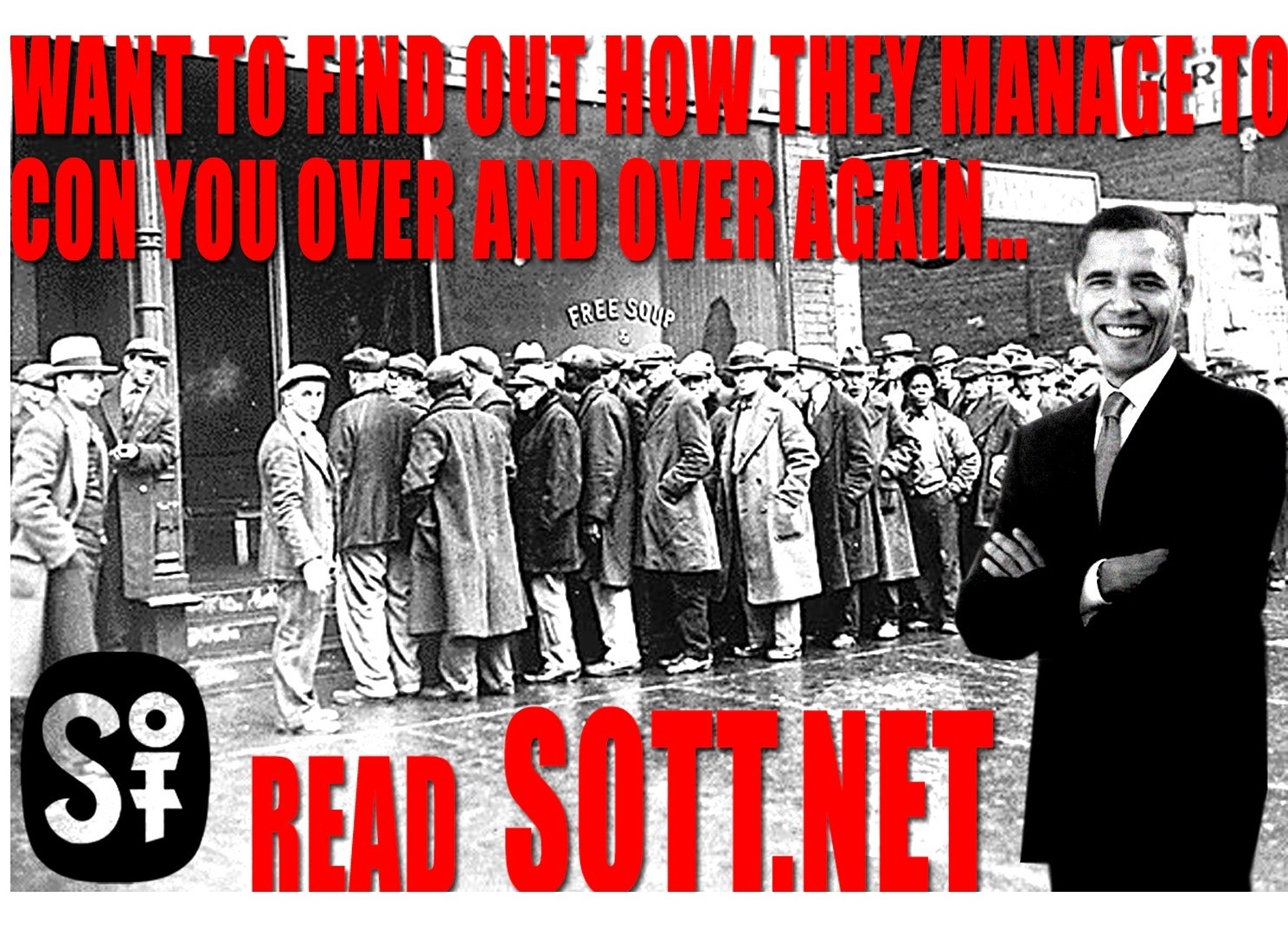
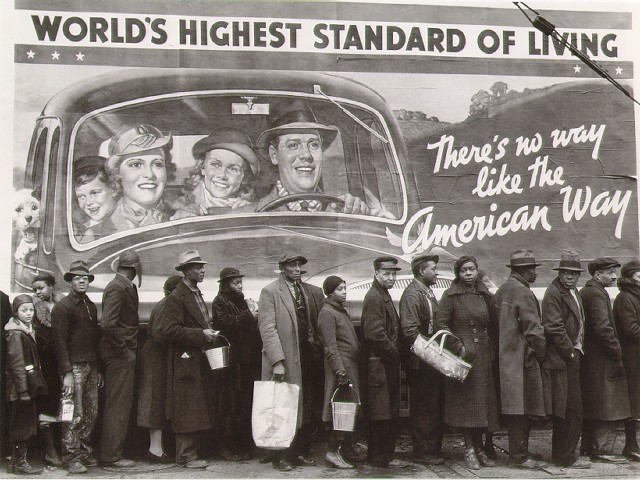
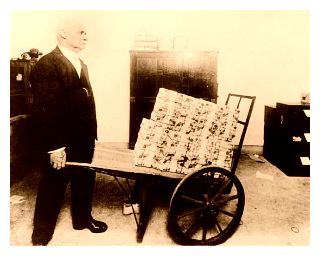
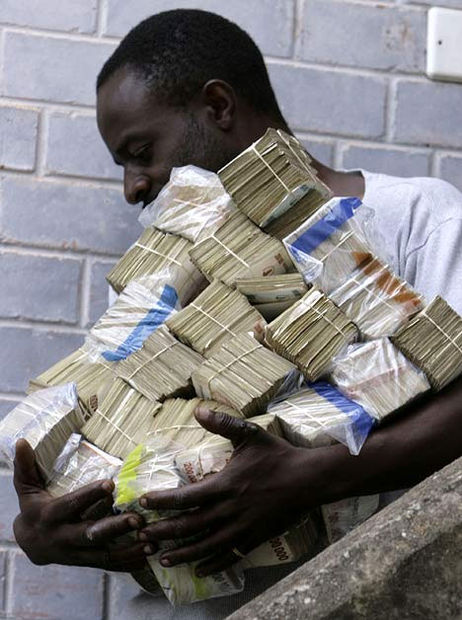

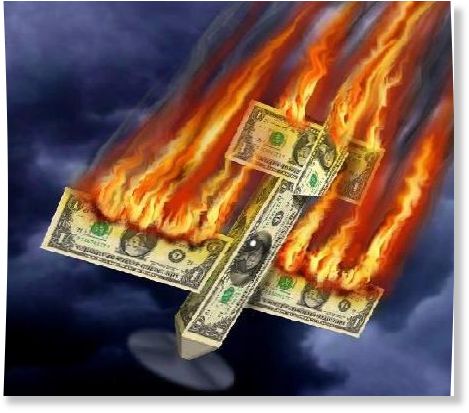
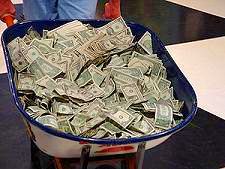
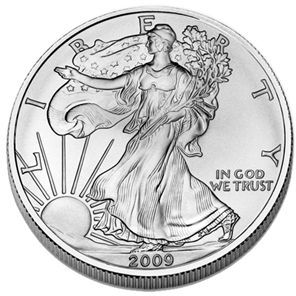
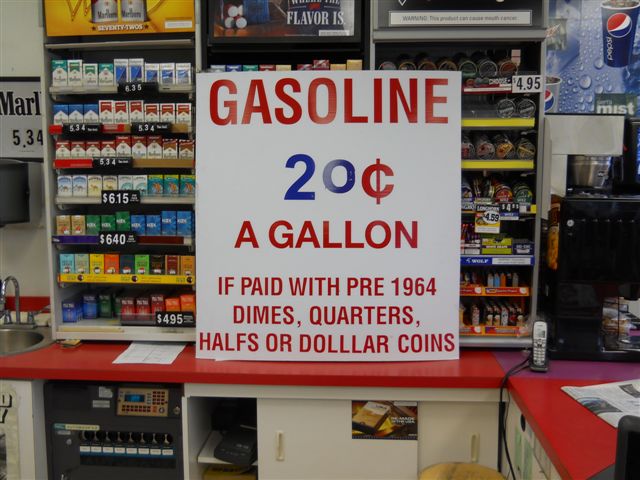
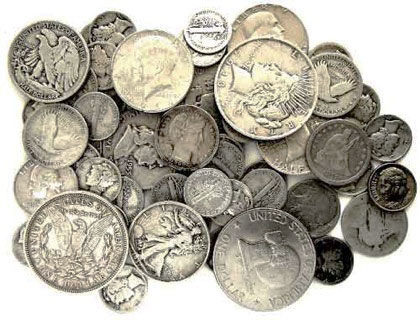




The writing seems to be on the wall.